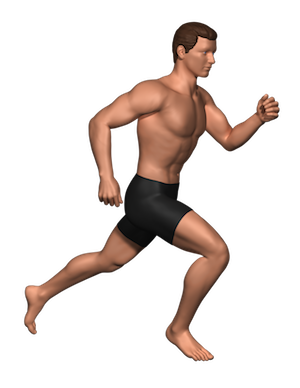The shoulder joint has more motion than any other joint in the body. But, with increased motion comes decreased stability. Picture a golf ball on a tee. That is what the head of the humerus (arm bone) looks like as it sits in the small, shallow groove of the scapula called the glenoid fossa. Much like the neck, the front muscles of the shoulder are used much more frequently and are stronger. That is why 95-98% of shoulder dislocations are forward (anterior). We have very strong muscles like the Pecs and Lats that bring the shoulder in towards the body and rotate it inwards. This causes rounded shoulders. Small weaker muscles like the rotator cuff, rhomboids and part of the deltoids try to keep it back. It is a difficult proposition.
Here’s a couple of the most common shoulder issues:
Frozen Shoulder
Also known as Adhesive Capsulitis. It is a relatively common condition of the shoulder that results is severe pain and loss of motion. Causes can be trauma to the shoulder, immobility after surgery and rotator cuff injuries. The tissue and capsule surrounding the shoulder joint become inflamed and stiff. It affects approximately 3% of the population. The pain can many times affect sleep. Bringing the arm behind the back to touch the shoulder blade can be excruciating. Chiropractic may help to break up some of the adhesions in the joint as well as getting motion back into the scapula which many time is restricted. Manipulation Under Anesthesia may also benefit those who cannot tolerate the discomfort of treatment while conscious.
Rotator Cuff Tendinitis
Rotator cuff injuries are the most common shoulder injuries. Tendinitis is inflammation of a tendon which is at one end of a muscle. The most common cause of tendinitis is repetitive overuse. Examples are pitcher’s or golfer’s elbow (medial epicondylitis), tennis elbow (lateral epicondylitis) or for this purpose, swimmer’s shoulder. Swimming is a great low impact exercise. In freestyle swimming, the arm is rotated inward and the water is pushed behind the individual. This leads to what is called impingement. This occurs when the rotator cuff muscles become irritated and inflamed as they pass through a certain part of the scapula. Tendinitis can also lead to bursitis which is inflammation of the bursa. Bursitis is always secondary to tendinitis. A bursa is a fluid filled sac that provides a cushion between bones and muscles/tendons. Its purpose is to reduce friction. The subacromial bursa is the largest in the body. Chiropractic will help to determine the balance of the front to back muscles of the shoulder and initiate the proper treatment regimen.
Labral Tears
The labrum is a cartilaginous continuation of the shoulder capsule along the rim of the shoulder joint that helps to deepen the socket. This gives more stability to the joint. Labral tears of the shoulder can be caused by direct trauma such as a fall or car accident and overuse repetitive small traumas as in exercise. Imbalance and instability of the shoulder may predispose one to injury of the labrum. Some labral tears require surgery while some may respond to conservative care. Based upon a thorough evaluation, it may be determined if conservative care may be warranted.
Fun Fact
Your scapula (shoulder blade) contributes to roughly one third of the motion in your shoulder.
Disclaimer
Chiropractors, like other doctors, cannot diagnose or treat patients without examining them in person. The information provided on this site is for general educational purposes only. If you are concerned about actual symptoms or complaints, consult with your own chiropractor.


